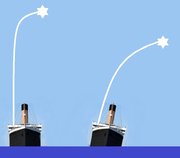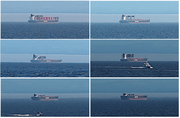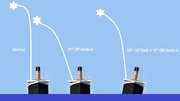You do not need a test, Christian. All you need is the averge height of a projectile above the sea and the height of eye of the observer above the sea. Under normal conditions of barometric pressure and air temperature the distance separating firing position and observer can be found by multiplying the square root of the heights by 1.15. If the atmosphere is clear, as it was that night, the barometer was very high, as it was that night and the air temperature above the sea was close to freezing, as it was that night, then that will effect the ability to see the signal, in that it will be seen at a much greater distance than normal.
The classic example is the distance between the stopped
Californian and the SS
Carpathia at or near to 3-30 am that morning. It has been claimed elsewhere that
Carpathia was firing socket signals. If these had been sen at extreme range i.e. on the horizon, by those on the
Californian at that time, then Captain Lord's navigation was most certainly at fault and his ship would have been 5 or 6 miles farther north that where he said it was when he stopped which would have made the separation distance between the
Californian and the sinking
Titanic closer to 28 miles. Now who believed that?
Any of the "experts" reading this will, I hope, forgive my approximations since I am writing this "on the hoof" as it were.





